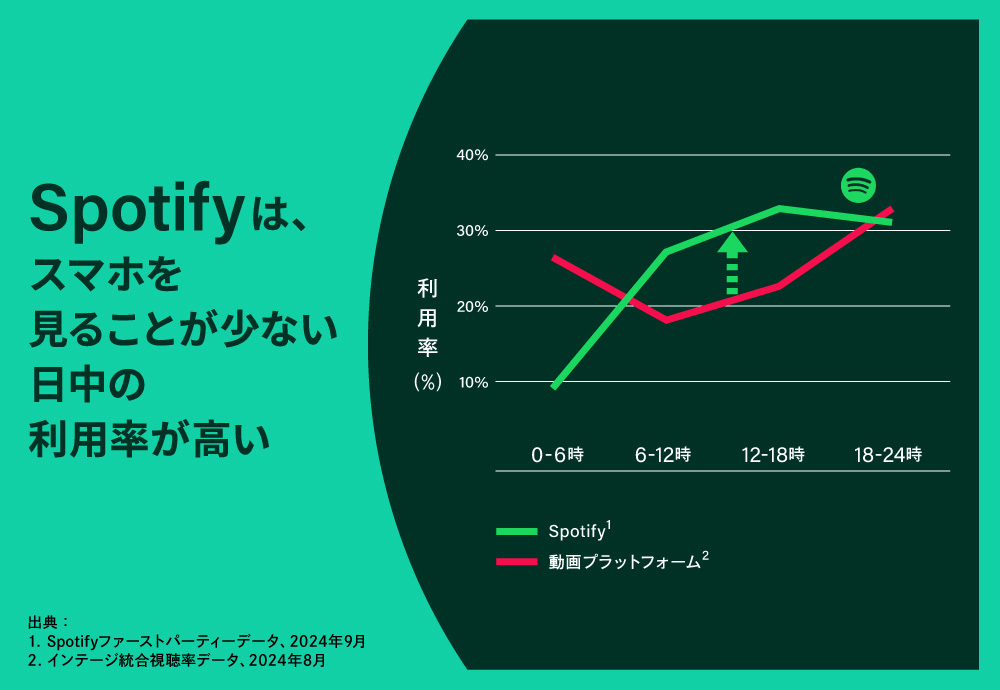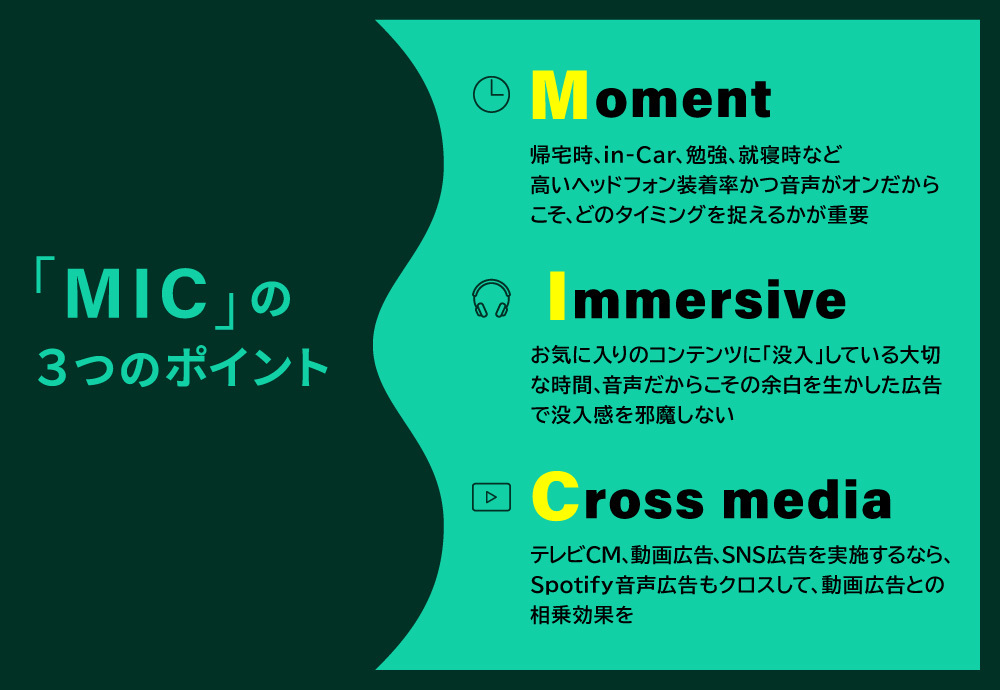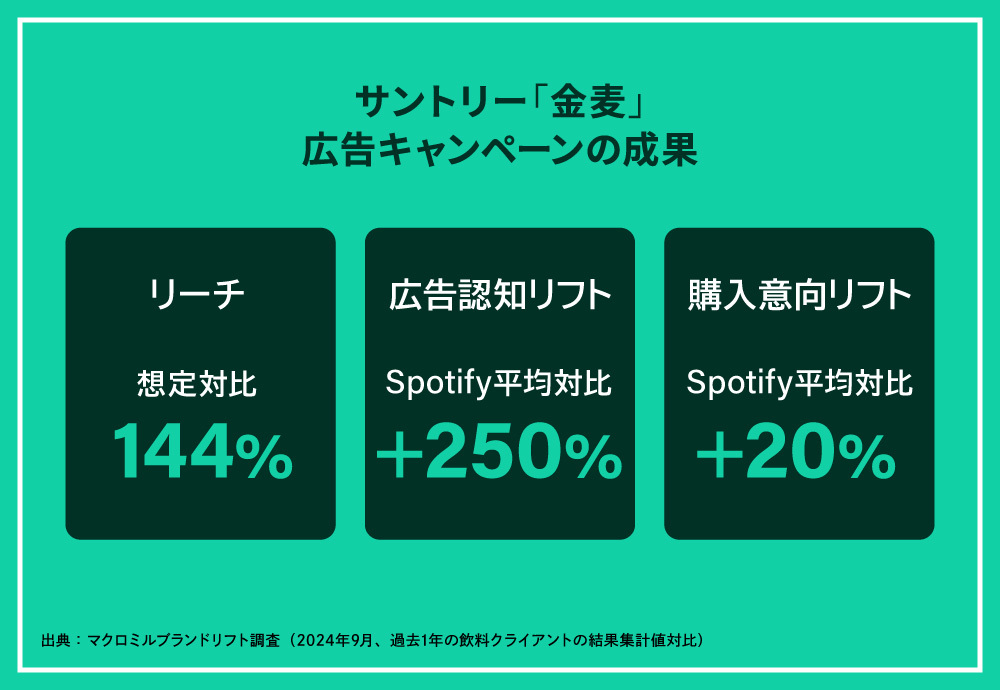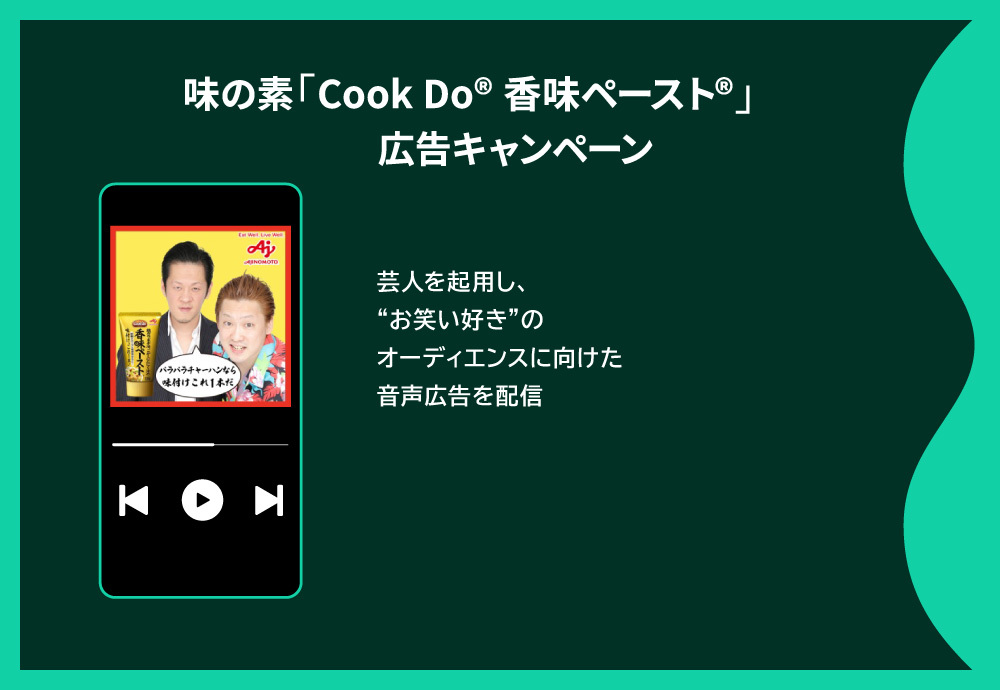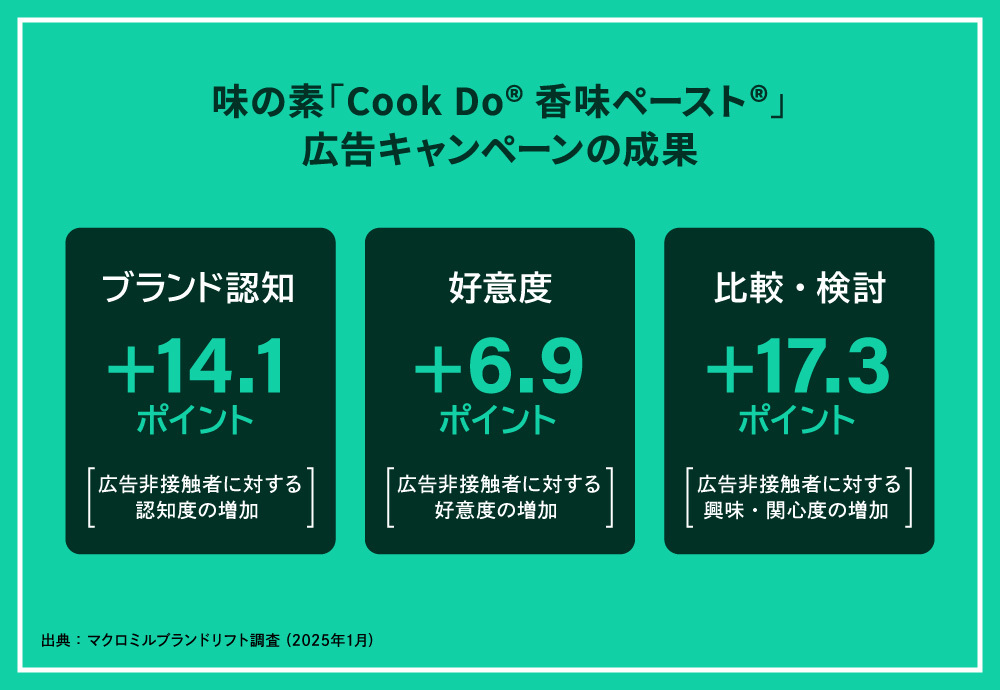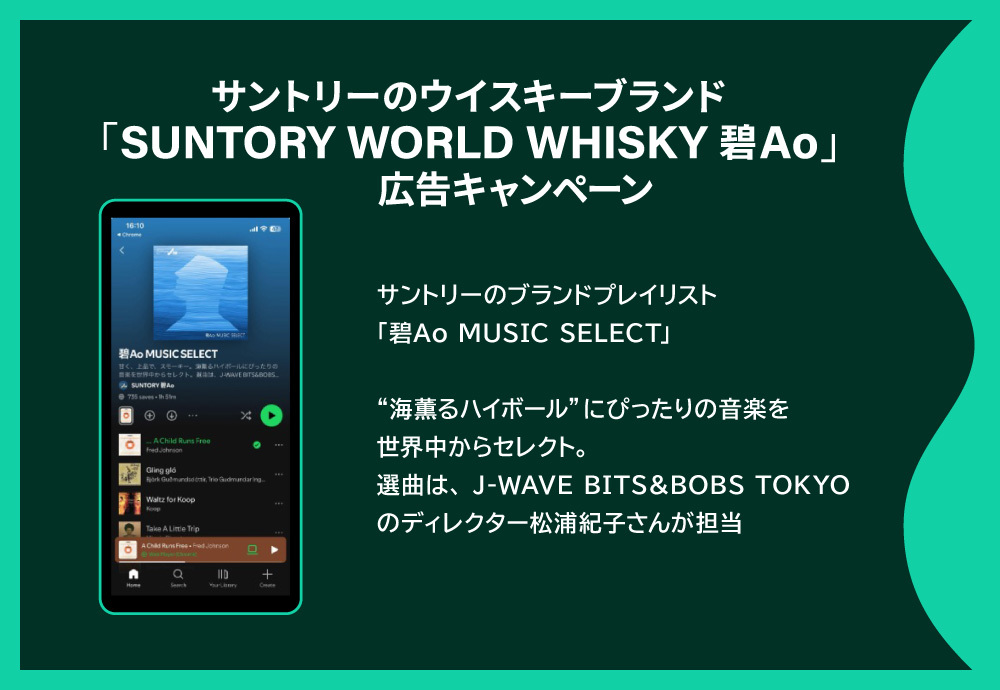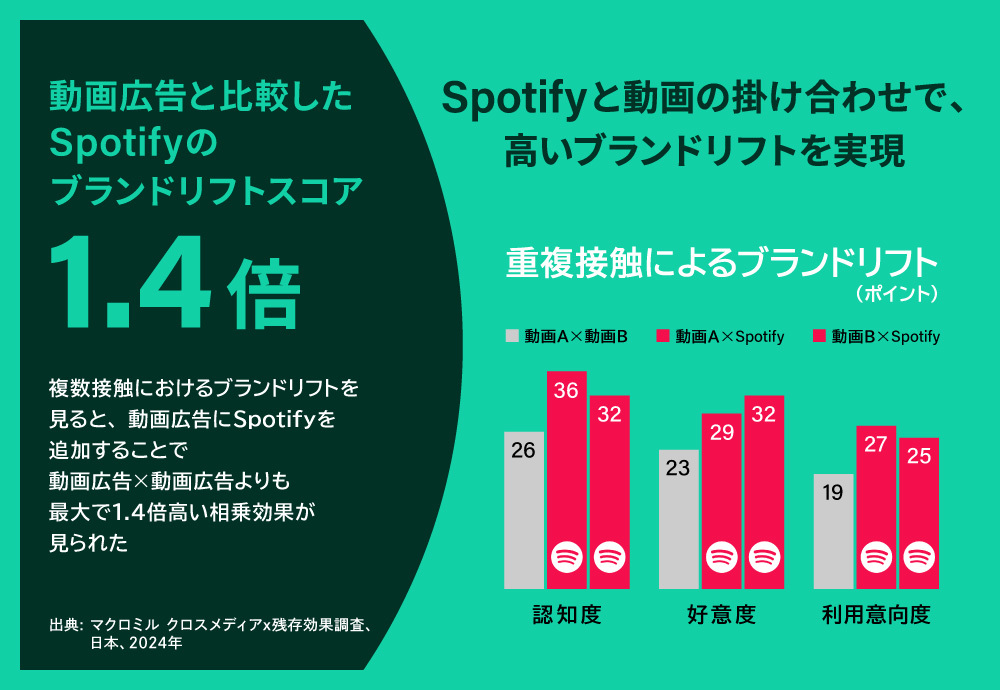Spotify is the most widely used service in Japan's music distribution and audio streaming category. It continues to grow globally, reaching 675 million monthly active users (MAU) worldwide in Q4 2024 (a 12% increase year-over-year). Of these, 425 million are ad-supported Free users (*1), demonstrating its expansion as an advertising medium.
This article introduces "MIC," a planning method that leverages Spotify ads to cost-effectively drive user action. If you're thinking, "I want to run Spotify ads more cost-effectively," "I lack expertise in audio ad production," or "I'm unsure how to combine it with other media," we hope you'll find this reference useful.
What is the MIC Planning Method?
Spotify users spend an average of 2 hours per day on the platform (※2), enjoying music and content during all moments—commuting, exercising, driving, relaxing at home, and more.
With particularly high usage during daytime hours when smartphone screen time is low (※3), Spotify ads can be added to daytime media plans—where visual media like video platforms and social networks struggle to reach audiences—enabling messages to be delivered throughout the day.
Furthermore, by aligning with users' moments and analyzing their mood or emotions based on the audio genre or playlist they're listening to, you can leverage this insight for targeting. This enables a "personalized" appeal that resonates more strongly with each individual user's feelings.
Spotify is frequently used in a "fan-driven" manner by communities centered around K-POP, rock bands, anime, and other fandoms. Advertisers can connect with these fans on Spotify, harnessing their positive energy and desire to support their favorites for marketing purposes.
Spotify research shows that 93% of users maintain their engagement with content even when transitioning to ads (※4). This indicates that users' positive listening attitudes translate into high ad engagement.
Spotify's annual "Culture Next" survey on Gen Z found that 74% of Japanese Gen Z respondents stated, "Spotify is the ultimate antidote to doomscrolling" (※5). As many young people crave positive experiences and genuine connections, Spotify serves as a remedy for "social media fatigue."
Against this backdrop, many advertisers are now leveraging Spotify ads, anticipating the unique moments only Spotify advertising can capture and the high engagement driven by positive connections.
Through analyzing numerous campaigns, the Spotify and Dentsu Inc. team identified common traits in those delivering exceptional results. This led to the development of "MIC"—a planning methodology designed to cost-effectively drive user action.
"MIC" stands for "Moment," "Immersive," and "Cross media." By consciously incorporating these elements into advertising campaigns, it is possible to significantly enhance effectiveness. Let's explain each point of " " using examples.
【Moment】Capture the commute home to achieve high brand lift
As mentioned earlier, Spotify is used across a wide range of moments, including times when users aren't looking at screens—such as commuting, exercising, driving, or relaxing at home. Another key characteristic is that over 80% of users listen with earphones or headphones. Considering these circumstances,
- What moments or situations should your message reach people in?
- How should we target to reach them?
- What kind of creative matches the moment?
By designing ads that consider these factors, you can significantly enhance effectiveness.
Suntory's "Kinmugi" designed its campaign to capture the "commute home" time, when people look forward to their evening drink, to promote it as a beer-based beverage perfect for daily home consumption.
Ads were delivered exclusively between 5 PM and midnight. The creative featured "Kinmugi waiting at home speaking to its returning owner." Fifteen distinct audio creatives were prepared, each designed for listeners to relate to their own situations, and aired on a daily rotation. Since audio content is often consumed as part of a routine, depicting different scenarios daily aimed to foster affection for the entire ad series.
This campaign demonstrated consistently high advertising effectiveness, from awareness to purchase intent. Notably, awareness results showed a significantly higher lift compared to typical video ads, and purchase intent lift was confirmed even with short exposure times. The design effectively captured the commuting time moment—a particular strength of Spotify—and the listeners' engagement attitude, leading to a high cost-per-brand-lift.
【Immersive】Appealing to comedy-loving listeners with a highly compatible tone
Spotify users often immerse themselves as fans in their favorite songs and content. Therefore, ads played between tracks must avoid disrupting this immersion. By consciously embracing the "breathing room" inherent to audio, avoiding message overload, and tuning the content to match the audio experience, we aim to achieve high advertising effectiveness.
Ajinomoto's "Cook Do® Aromatic Paste®" continuously runs Spotify audio ad campaigns primarily to boost brand awareness and product understanding among younger demographics. As part of verifying creative optimization effects within the campaign, audio ads targeted a specific audience of "comedy enthusiasts" were delivered.
The ads aired within the popular Spotify-exclusive podcast "All Night Nippon (ANN)". Aligning with ANN's strong comedy content, comedians were featured. The script was written by the comedians themselves, presenting the product features through a three-part sketch-style creative that told a story spanning from identifying a need to brand purchase.
You can listen to the ad here
Brand lift research showed that among those who both heard the ad and recognized the brand, scores for brand awareness, favorability, and consideration all lifted compared to non-exposed listeners. We believe this success stemmed from approaching users enjoying comedy content with highly relevant creative that effectively communicated the product's features in a memorable way without disrupting their listening experience.
Additionally, Spotify offers a unique method called "Brand Playlists," which conveys a brand's worldview through music, serving as another effective way to promote a brand without disrupting the music-listening experience.
SUNTORY's whisky brand "SUNTORY WORLD WHISKY Ao" created a brand playlist inspired by one of its recommended ways to enjoy the whisky, the "Sea-Infused Highball," to let users experience the brand's world through music. They directed traffic to this playlist from various platforms and social media. Cultivating brand image through music curation rather than advertising is unique to audio platforms.
Check out the"SUNTORY WORLD WHISKY Ao"Spotify playlist here
【Cross media】Cross-utilization of audio and video boosts awareness lift
When running TV commercials or video ads, we also utilize Spotify audio ads for cross-media appeal. By delivering messages through both visual and auditory channels with creative content tailored to each medium's strengths, we can further enhance the overall campaign's effectiveness.
KDDI has previously conducted promotions across various media, including TV and social media, to raise awareness of its high-speed Wi-Fi service "WiMAX +5G" (provided by UQ Communications). Noting that Spotify has a large user base in the 20s, the service's main target demographic, and that it offers touchpoints with the target audience even during moments when they aren't looking at a screen—such as while working or commuting—KDDI decided to try a cross-media campaign. This campaign added Spotify audio ads to the video media they had been using previously.
We delivered the unified message "WiMAX +5G" across various video media and Spotify. For Spotify, we produced and distributed audio ads in various formats tailored for the platform, including conversational dramas, quizzes, and music ads.
You can listen to the ad (dialogue drama) here
Listen to the ad (quiz format) here
Advertisement (Music Format) can be heard here
As a result, Spotify ads alone showed high brand lift, but combining Spotify ads with video ads yielded even higher brand lift. Comparing brand lift between those exposed to multiple media ads and those not exposed, the overlap between Spotify and video ads showed up to 1.4 times higher brand lift than the overlap between video ads alone.
This time, we introduced the "MIC" planning method for Spotify ads. "Moment," "Immersive," and "Cross Media" are all effective planning techniques that leverage Spotify's unique user experience. We will continue to support our clients' further business growth through this "MIC" approach.
Source:
※1 Spotify first-party data (Q4 2024)
※2 GWI Global Study (June 2024)
※3 Spotify first-party data (September 2024), INTAGE Integrated Audience Ratings data (August 2024)
※4 Sonic Science Study, 1st Edition: Neuro-Insight and Spotify (June 2021)
※5 Spotify Culture Next Vol. 6 Survey E1 Japan (July 2024)





